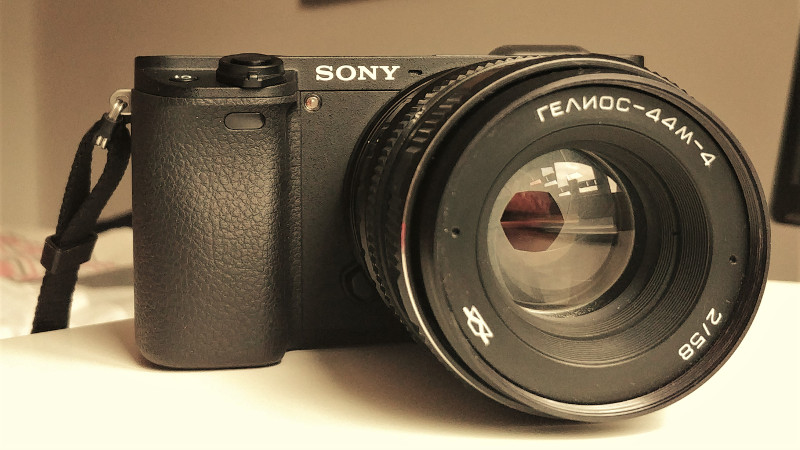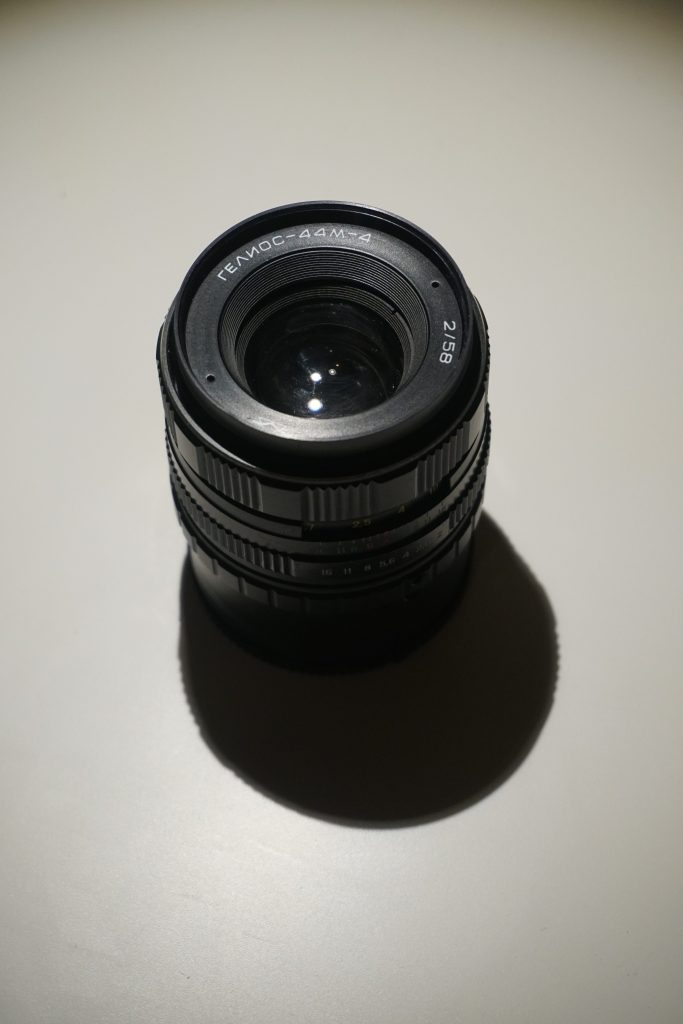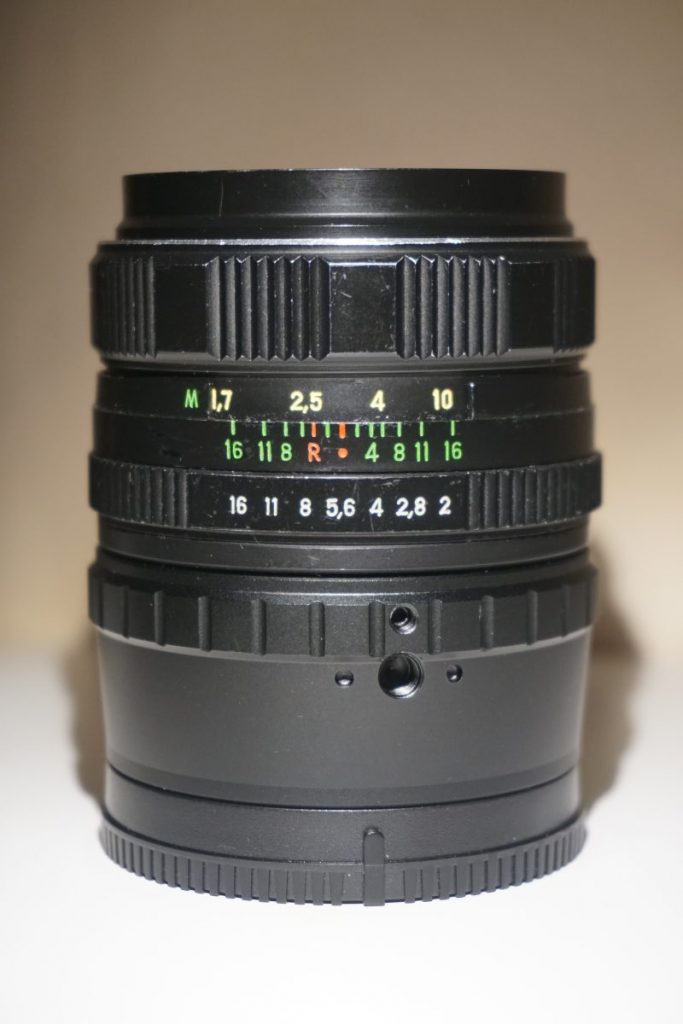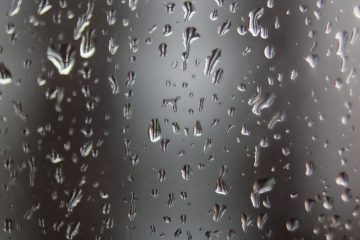
My Helios-44M-4 58mm f/2.0 lens mounted on my Sony α6300
When you say “high quality lenses”, many people think of the latest and greatest pieces of glass from Canon and Nikon, which can easily cost as much as a decent laptop. However, the vintage lens market offers great opportunity for buying high quality lenses with fascinating optical effects for little more than the price of a couple of cinema tickets. Let’s take a look at one such option, the Helios-44M-4 58mm f/2.0 prime lens.
This lens is part of the long 44 series produced by one of three Soviet/Russian companies (KMZ, MMZ and Jupiter) between 1958 and 1992 under the Helios (or Гелиос in its native Cyrillic) branding. Other well known models within the series include the 44 and 44-2, with all models featuring the swirly bokeh that has now made them famous.
Compromises
Having been produced in their millions, there is now a strong surplus of these lenses available on eBay, with an example in good condition costing as little as £20 ($26.95, 22,90€) and often available for not much more. This puts them far below the sorts of prices you’d pay for a Sony lens, even second hand, with the Sony 50mm f/1.8 lens costing a minimum of around £150 ($202.12, 171,71€) on eBay. So what compromises do you have to make for such a low price?
The biggest difference between the Helioses (and pretty much any vintage lens) and more modern equivalents is their use of manual aperture and focus. On the 44M-4 these take the form of two rings, with the aperture ring being clicked and the focus ring being firm but declicked. It’s also worth noting that for the aperture to vary when the ring is turned, a pin on the back needs to be pressed, but this should be taken care of by your lens mount adapter.
That brings us onto the second disadvantage of vintage lenses: they use older mounting styles that will require an adapter for mounting onto modern cameras. However, adapters are available for many old mounting styles, including the M42 screw mount used by the Helios and many other vintage lenses. These adapters are reasonably priced too, costing around £12 ($16.17, 13,73€) on Amazon for a good quality aluminium one. They do add a little more weight to your system though, with my adapter coming in at 89g (3.1oz).
Build quality
One thing you can be sure of when buying Helios lenses is the high build quality of the Soviet engineering that went into them. My Helios-44M-4 weighs 345g (12.2oz) with a typical UV filter (using a 52mm thread) and adapter attached, or when attached to a Sony α6300 the pair comes in at 786g (1lb 17.7oz). This compares to 125g (4.4oz) and 567g (1lb 4.0z) respectively for the 16-50mm kit lens that is often found paired with Sony mirrorless cameras. This gives the Helios a good hefty feel, especially with its all metal construction. It’s far from excessive though, with the extra bit of weight giving a good sense of stability and balance when shooting handheld.
The front element is also well set back from the front of the barrel, giving the lens a chunky look and improving its ruggedness. Combined with the weight, this makes the lens feel like a real tank of a thing that could happily survive a few drops.
- The all metal construction gives a solid feel
- The focus ring is smooth while the aperture ring is satisfyingly clicky. Numbering on the rings is clear.
Performance
Even the cheapest and best constructed and lens is nothing if it doesn’t produce decent quality images, but the 44M-4 certainly doesn’t disappoint in this regard. If care is taken when manually focusing, the centre of the image is razor sharp, with it becoming much softer towards the corners (as is common with vintage lenses). While this softness can have a detrimental effect when shooting landscapes, the lens is well suited to portraits.
The 58mm focal length gives a nice telephoto feel when combined with the 1.6x crop factor of the APS-C sized sensor on the α6300. The widest aperture of f/2.0, while not as large as on some vintage and modern lenses, is certainly wide enough to produce some very short depth of field and gorgeous bokeh. These lenses also have the special feature of ‘swirly’ bokeh, caused by spherical aberration. This means that as you move away from the centre of the frame, the bokeh seems to almost form rings around the subject, focusing the viewer’s eye on the frame centre.
- The centre of the frame is sharp and becomes softer at the edges
- Images can be very sharp when well focused
- Swirly bokeh focuses attention on a subject placed at the centre of the frame
Using manual focus does take a little bit of getting used to, and it can be surprising when reviewing a shot later how out of focus it can be if you don’t take the time to get it right. Focus peaking and the focus magnifier on the α6300 (and other cameras) make the job a lot easier though, allowing you to get sharp focus every time if you’re willing to take a few seconds to do so. However, this delay does mean that the Helios and other manual focus lenses aren’t well suited to sports photography or other applications where fast and accurate focusing is a must.
The depth of field can be incredibly short, so that while the minimum focus distance of 0.7m (2.3ft) means the lens isn’t great for macro shots, some very interesting and cinematic effects can be produced.
- Images can be very sharp when care is taken with focusing
- The muted colours in this image were due to stray light from not using an adapter – the lens was handheld in front of the camera at a suitable distance to be in focus
- The muted colours in this image were due to stray light from not using an adapter – the lens was handheld in front of the camera at a suitable distance to be in focus
- Colours can be very bright. This image also shows the softer corners
Colour production is also often excellent, with just an extra bit of contrast and saturation sometimes needing to be edited in afterwards. Note that all images in this post other than the title image are unedited apart from a reduction in resolution.
Conclusions
Overall, the Helios-44M-4 is a fantastic lens. Its short depth of field capability and swirly bokeh can produce some truly stunning results, and colour and sharpness are also impressive. Manual focusing can take some getting used to, but modern aids like focus peaking and the focus magnifier make this easy, if slightly time consuming. Build quality is also excellent, making the lens feel sturdy in the hand both individually and when attached to a camera body.
The lens isn’t perfect, with very noticeable softness at the edges of the frame, although this can be used to the photographer’s advantage. Contrast and saturation can sometimes be slightly suboptimal, but these are easily corrected during editing.
The best feature of this lens though has to be its price. For as little as £20 ($26.95, 22,90€), you can buy a solid piece of Soviet engineering that will deliver fantastic results for many more years to come. I therefore highly recommend that anyone looking for a new prime lens strongly considers the Helios-44M-4.
If you’d like to be emailed when I post more reviews on my blog, don’t forget to subscribe.









